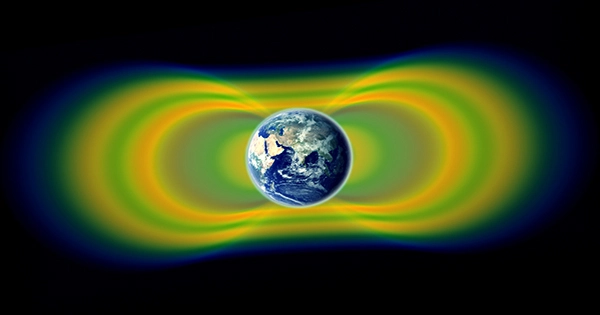Molten iron and nickel travel about thousands of kilometers beneath our feet in the Earth’s outer core. Our planet’s magnetic field is created by this motion, which has shielded life for billions of years from the worst of cosmic radiation. Understanding the geomagnetic field is still a work in progress, but a recent study from the European Space Agency has discovered magnetic waves on the outer core’s surface, near the mantle’s border. The wave moves slowly over the outer core at 1,500 kilometers per year, according to the Proceedings of the National Academy of Sciences (0.1 miles per hour). It repeats itself every seven years.
“Geophysicists have long theorized about the presence of such waves,” lead author Dr. Nicolas Gillet of the University Université Grenoble Alpes stated in a statement. “Magnetic field data from devices on the surface of the Earth showed that there was some form of wave movement, but we required the global coverage provided by observations from orbit to uncover what is truly going on.”
The data for the Swarm mission, as well as some earlier data from the German Champ and Danish rsted missions, is used. Swarm is made up of three similar satellites that can monitor magnetic fields in the planet’s core as well as signals from other parts of the globe from afar. According to the findings, the waves are stronger around the equator and lined in columns along the planet’s rotating axis. These waves display magneto-Coriolis motion, similar to how the Coriolis force impacts fluid flows on the globe north and south of the equator.
“Disturbances deep within the Earth’s fluid core, presumably connected to buoyant plumes, are likely to cause magnetic waves.” The period and usual length-scale of each wave is determined by the properties of the forces at play, and the period is determined by the characteristics of the forces at play. The period of magneto-Coriolis waves is related to the strength of the magnetic field within the core, according to Dr. Gillet.
“Our findings imply that further similar waves are likely to occur, with longer durations — but their identification will need more investigation.” The study sheds new light on the core’s behavior, as well as maybe more. Given the waves’ position – towards the mantle’s bottom – studying them might lead to a better understanding of the lower mantle, especially its electrical conductivity.















